Abstract
The footpad reaction to autoclaved whole Mycobacterium lepraemurium organisms (MLM lepromin) in high-resistance (C57BL) and low-resistance (BALB/c) mice was studied. Infected C57BL mice gave a prolonged footpad response persisting for 4 weeks after skin testing with high and low doses of lepromin. This was accompanied by mononuclear cell infiltration. Uninfected C57BL mice gave no response. The majority of infected BALB/c mice gave no increase in footpad thickness. However, a high proportion of infected and control BALB/c mice tested with the high dose showed mononuclear cell infiltration which resembled that in C57BL mice. The low dose caused little infiltration in infected or control BALB/c mice. The course of infection in the two strains was different. Dissemination of organisms from the infected footpad was minimal in C57BL mice 5 months after infection. In BALB/c mice, dissemination to the draining lymph node and to some extent to the liver had occurred by 5 months. The draining lymph node of BALB/c mice showed histological evidence of local antibody formation, which uas not found in C57BL mice. On the basis of these findings, it was possible to fit murine leprosy in these two strains into a classification similar to that used for human leprosy.
Full text
PDF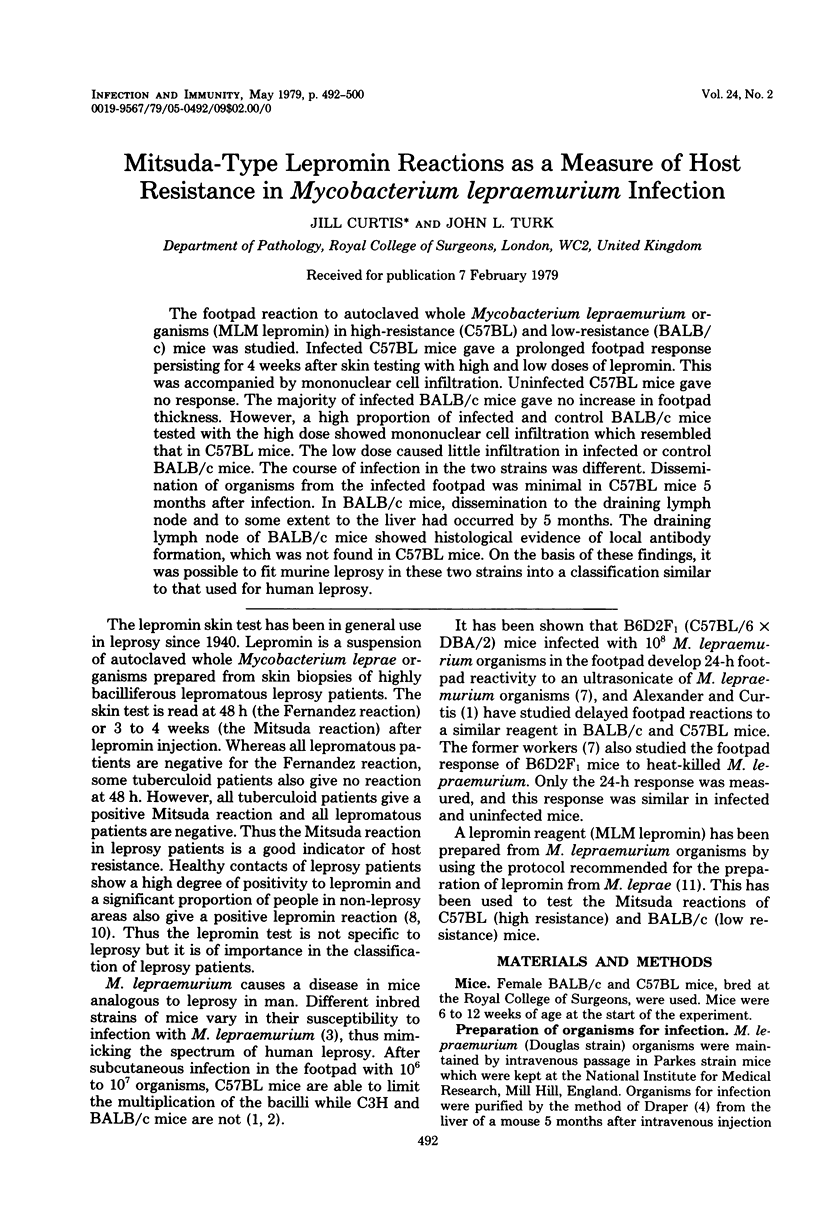
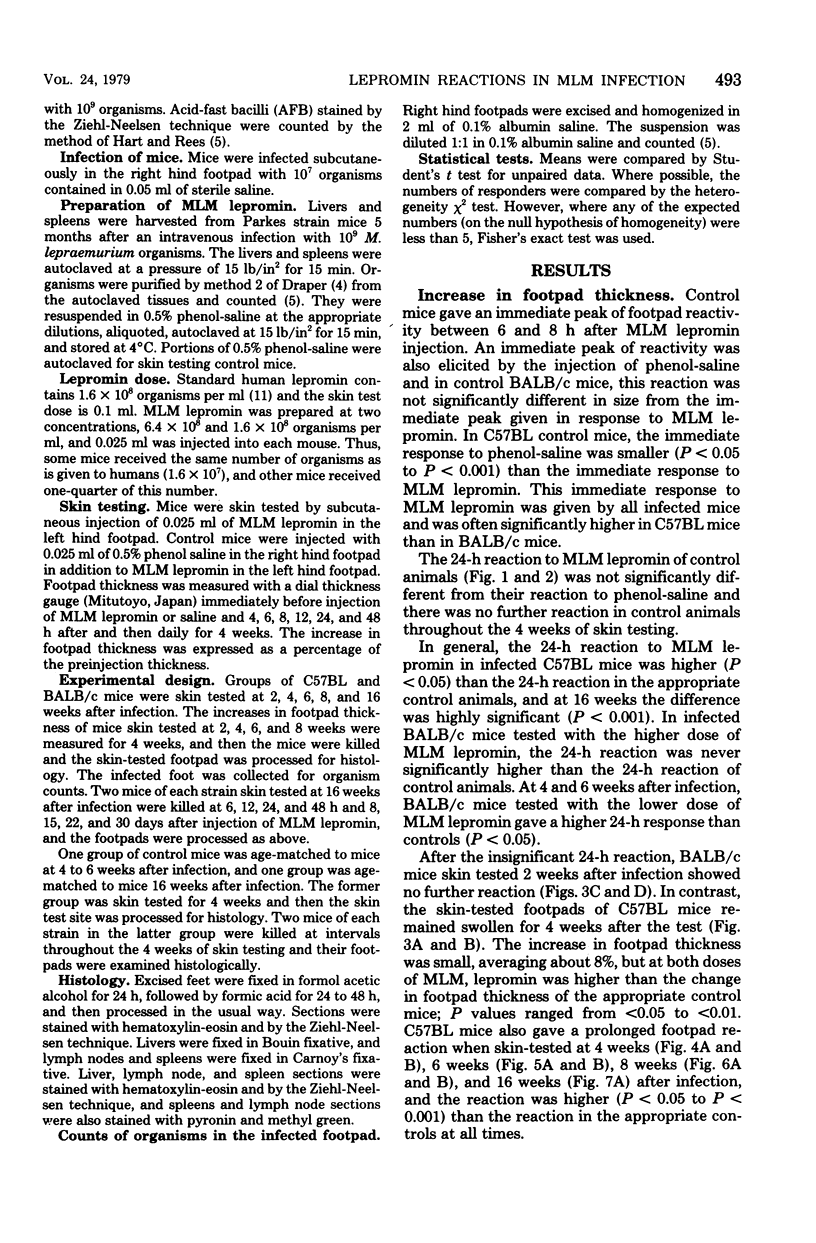
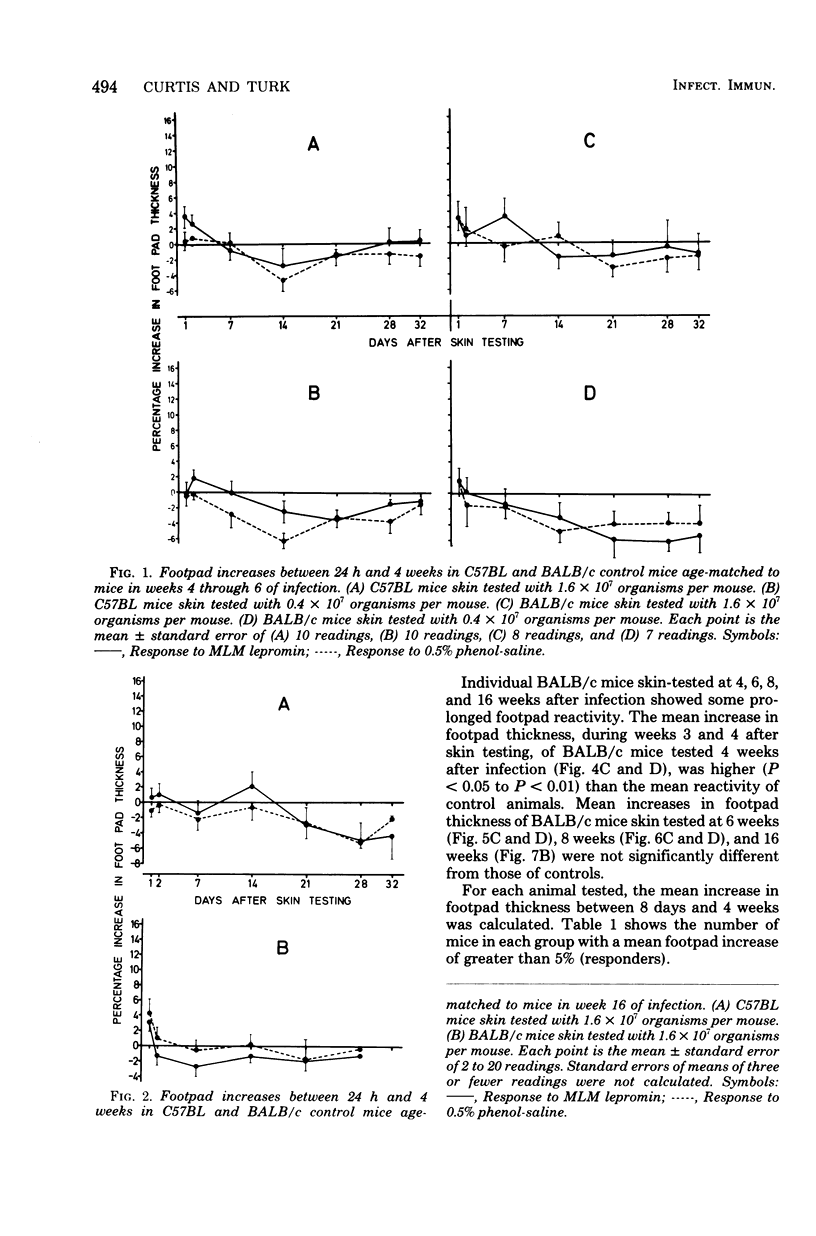
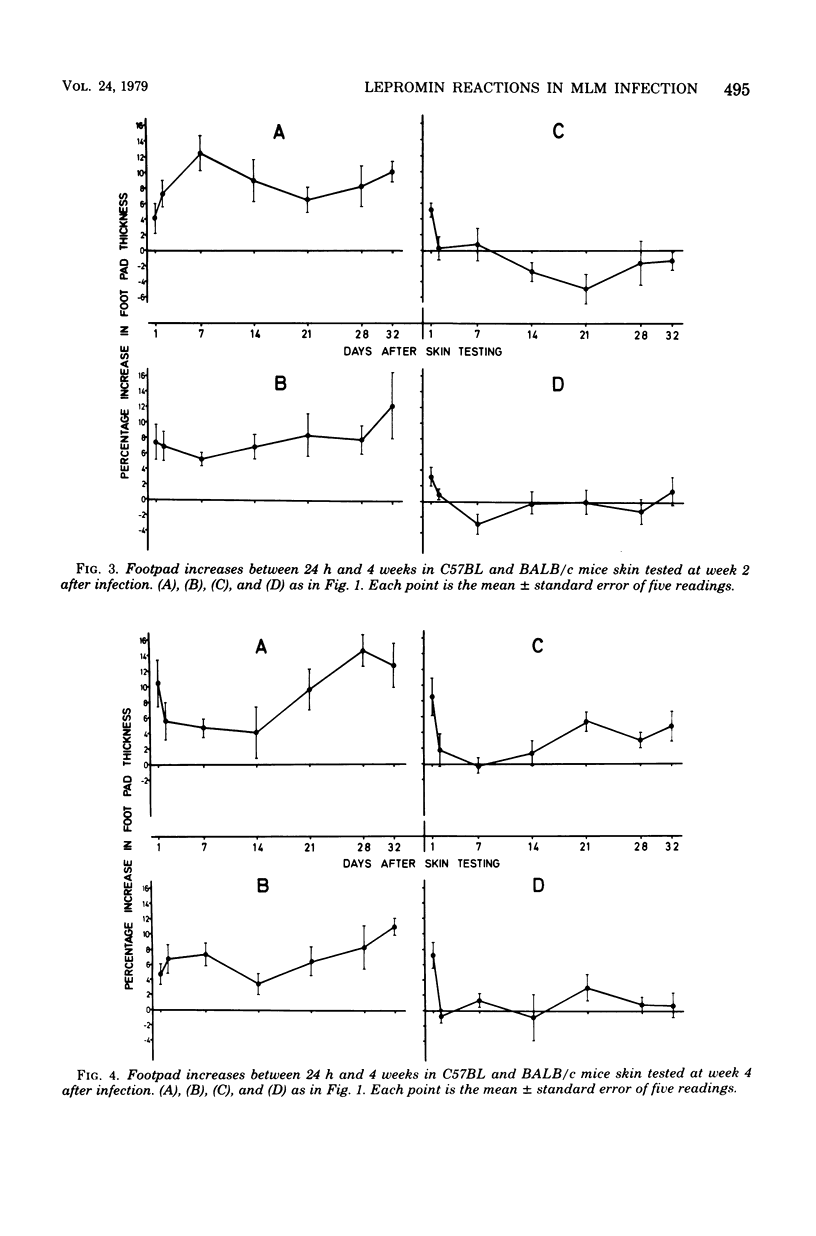
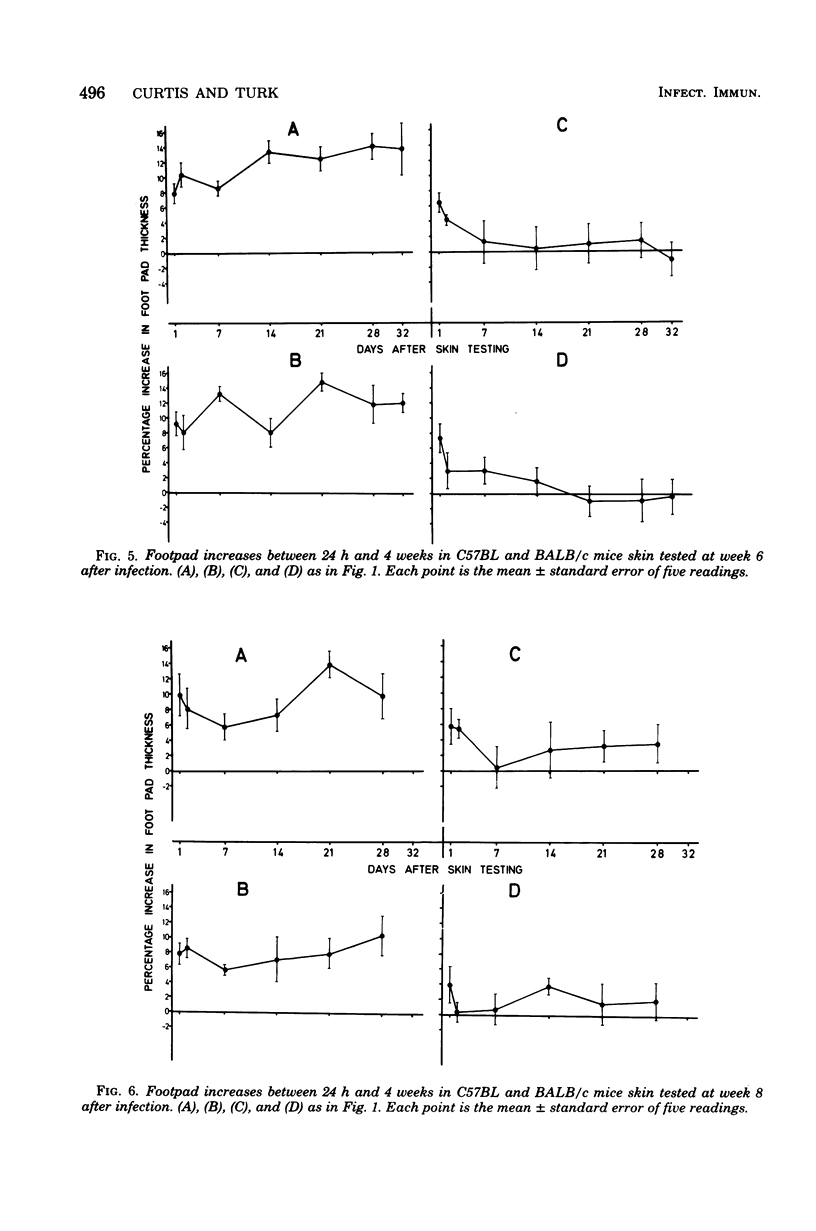
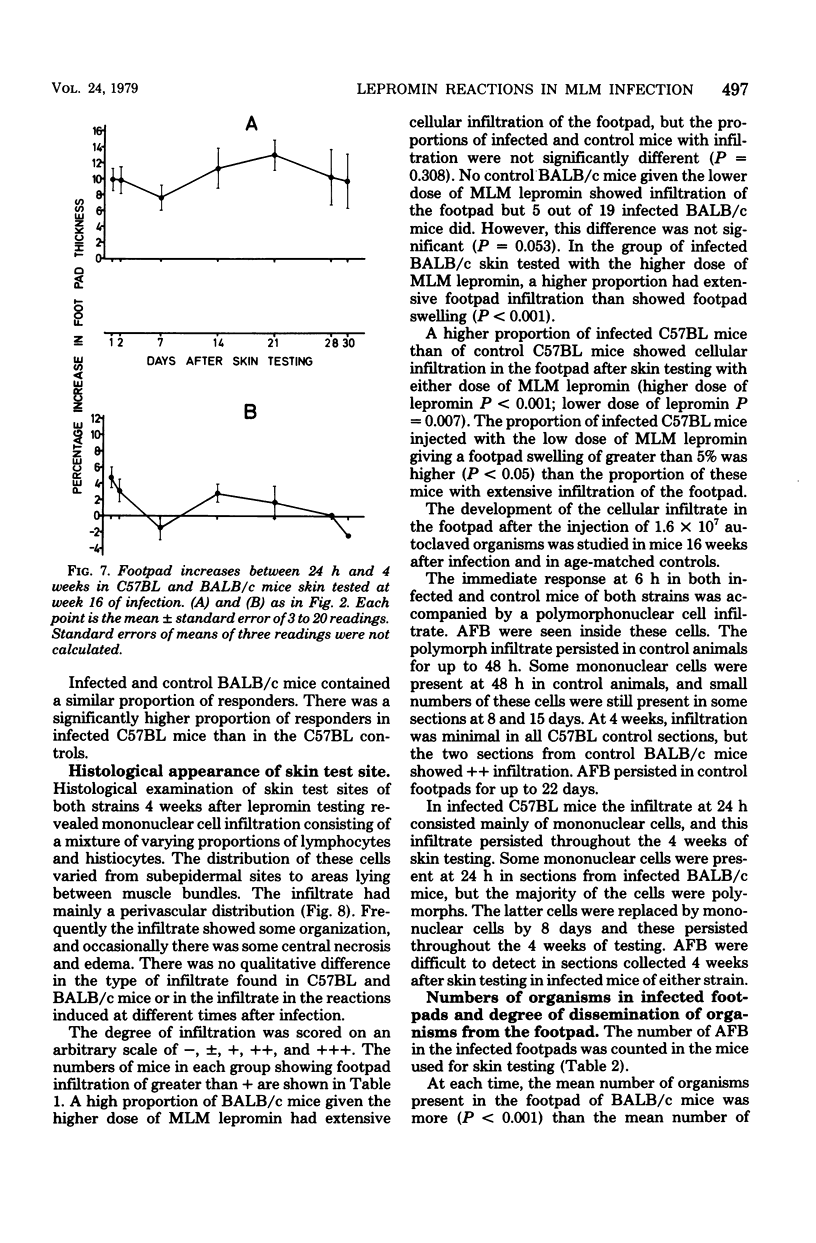
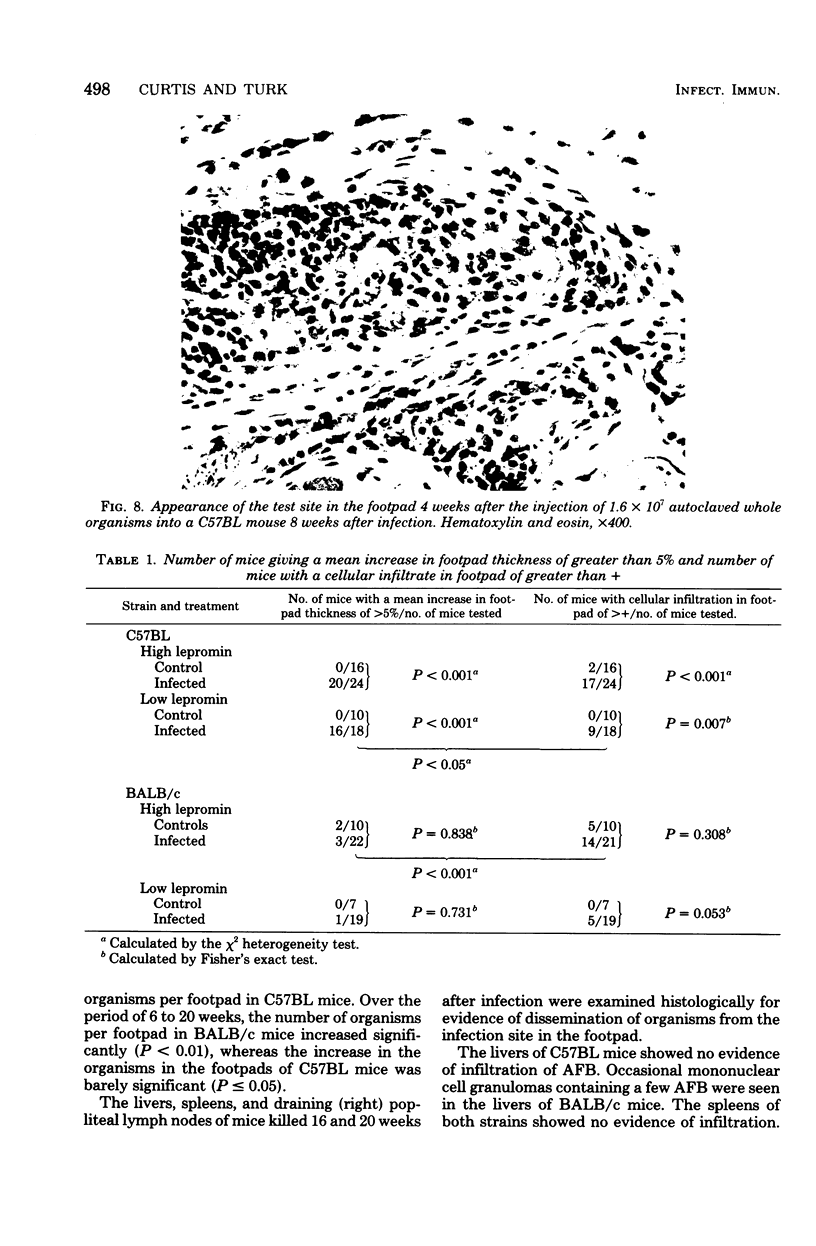
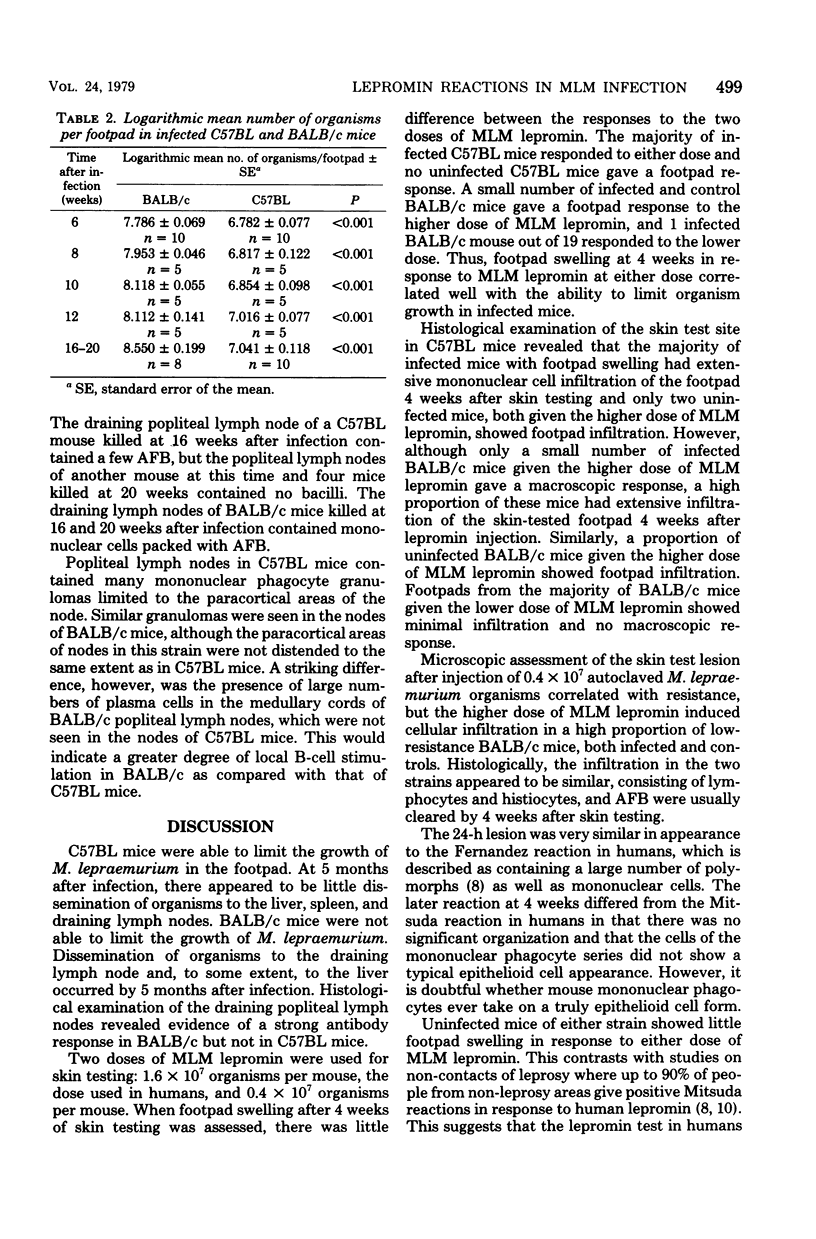
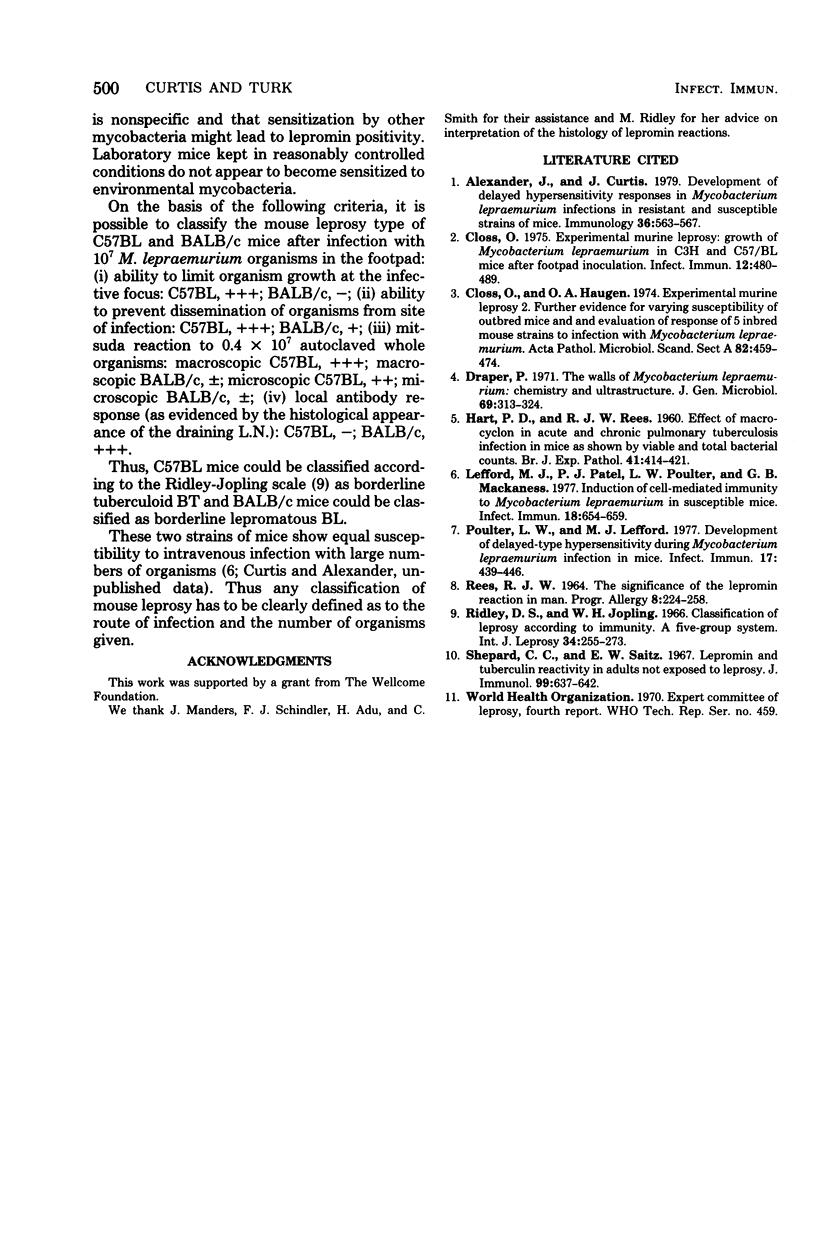
Images in this article
Selected References
These references are in PubMed. This may not be the complete list of references from this article.
- Alexander J., Curtis J. Development of delayed hypersensitivity responses in Mycobacterium lepraemurium infections in resistant and susceptible strains of mice. Immunology. 1979 Mar;36(3):563–567. [PMC free article] [PubMed] [Google Scholar]
- Closs O. Experimental murine leprosy: growth of Mycobacterium lepraemurium in C3H and C57/BL mice after footpad inoculation. Infect Immun. 1975 Sep;12(3):480–489. doi: 10.1128/iai.12.3.480-489.1975. [DOI] [PMC free article] [PubMed] [Google Scholar]
- Closs O., Haugen O. A. Experimental murine leprosy. 2. Further evidence for varying susceptibility of outbred mice and evaluation of the response of 5 inbred mouse strains to infection with Mycobacterium lepraemurium. Acta Pathol Microbiol Scand A. 1974 Jul;82(4):459–474. [PubMed] [Google Scholar]
- Draper P. The walls of Mycobacterium lepraemurium: chemistry and ultrastructure. J Gen Microbiol. 1971 Dec;69(3):313–324. doi: 10.1099/00221287-69-3-313. [DOI] [PubMed] [Google Scholar]
- HART P. D., REES R. J. Effect of macrocyclon in acute and chronic pulmonary tuberculous infection in mice as shown by viable and total bacterial counts. Br J Exp Pathol. 1960 Aug;41:414–421. [PMC free article] [PubMed] [Google Scholar]
- Lefford M. J., Patel P. J., Poulter L. W., Mackaness G. B. Induction of cell-mediated immunity to Mycobacterium lepraemurium in susceptible mice. Infect Immun. 1977 Dec;18(3):654–659. doi: 10.1128/iai.18.3.654-659.1977. [DOI] [PMC free article] [PubMed] [Google Scholar]
- Poulter L. W., Lefford M. J. Development of delayed-type hypersensitivity during Mycobacterium lepraemurium infection in mice. Infect Immun. 1977 Aug;17(2):439–446. doi: 10.1128/iai.17.2.439-446.1977. [DOI] [PMC free article] [PubMed] [Google Scholar]
- Ridley D. S., Jopling W. H. Classification of leprosy according to immunity. A five-group system. Int J Lepr Other Mycobact Dis. 1966 Jul-Sep;34(3):255–273. [PubMed] [Google Scholar]
- Shepard C. C., Saitz E. W. Lepromin and tuberculin reactivity in adults not exposed to leprosy. J Immunol. 1967 Oct;99(4):637–642. [PubMed] [Google Scholar]



